3. Register entities
In FeatureByte, an "entity" models real-world objects and ideas. These entities are often represented by unique identifiers in the data but not necessarily. An entity can be a group of entities, such as a City, a Product Group, etc... It can also be seen as a level of analysis you are interested in.
Step 1: Identify Entities in Your Data¶
In the Grocery dataset, we identified six entities.
| Entity Name | Description |
|---|---|
| customer | A grocery customer |
| invoice | A record of the customer's purchase |
| item | An individual item on the invoice |
| product | A product available in the store for purchase |
| productgroup | A category or group a product falls under |
| frenchstate | A region in France |
Step 2: Decide their Serving Name¶
An Entity's Serving Name is the name of the unique identifier used to identify the entity during a serving request in FeatureByte. It can be any name you find convenient as long as it is not used by another entity.
| Name | Serving Name |
|---|---|
| customer | GROCERYCUSTOMERGUID |
| invoice | GROCERYINVOICEGUID |
| item | GROCERYINVOICEITEMGUID |
| product | GROCERYPRODUCTGUID |
| productgroup | PRODUCTGROUP |
| frenchstate | FRENCHSTATE |
Step 3: Register Entities¶
Navigate to the Entity catalog from the 'Explore' section of the menu.
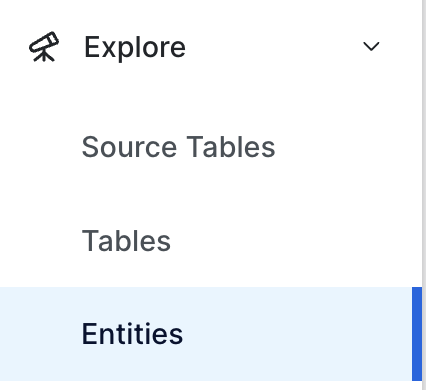
Repeat this for each entity:
- Click "Add Entity"
- Fill in the form: the entity Name, its Serving Name and optionally its description
- Confirm by clicking "Save Entity"

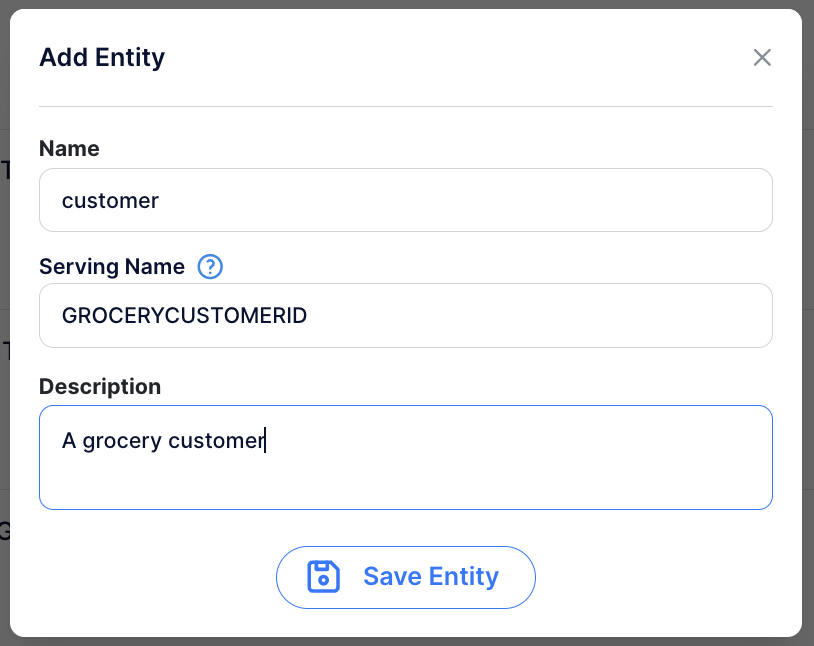
Step 4: Review Registered Entities¶
Verify the registration by checking the Entity Catalog under the 'Explore' section.

Step 5: Tag Columns Representing Entities¶
From the menu, navigate to the 'Explore' section and access the Table catalog.

For each table, navigate to the 'Columns' tab and associate relevant columns with the entities they represent.

In GROCERYINVOICE,
- GroceryInvoiceGuid identifies invoice
- GroceryCustomerGuid represents customer

In INVOICEITEMS,
- GroceryInvoiceItemGuid identifies item
- GroceryInvoiceGuid represents invoice
- GroceryProductGuid represents product

In GROCERYCUSTOMER,
- GroceryCustomerGuid identifies customer
- State represents frenchstate

In GROCERYPRODUCT,
- GroceryProductGuid identifies product
- ProductGroup represents productgroup
Step 6: Review Entities Relationships¶
Verify the relationships established by the tagging.
Navigate to the Table Catalog, click the diagram icon to verify the table diagram established by the tagging.

